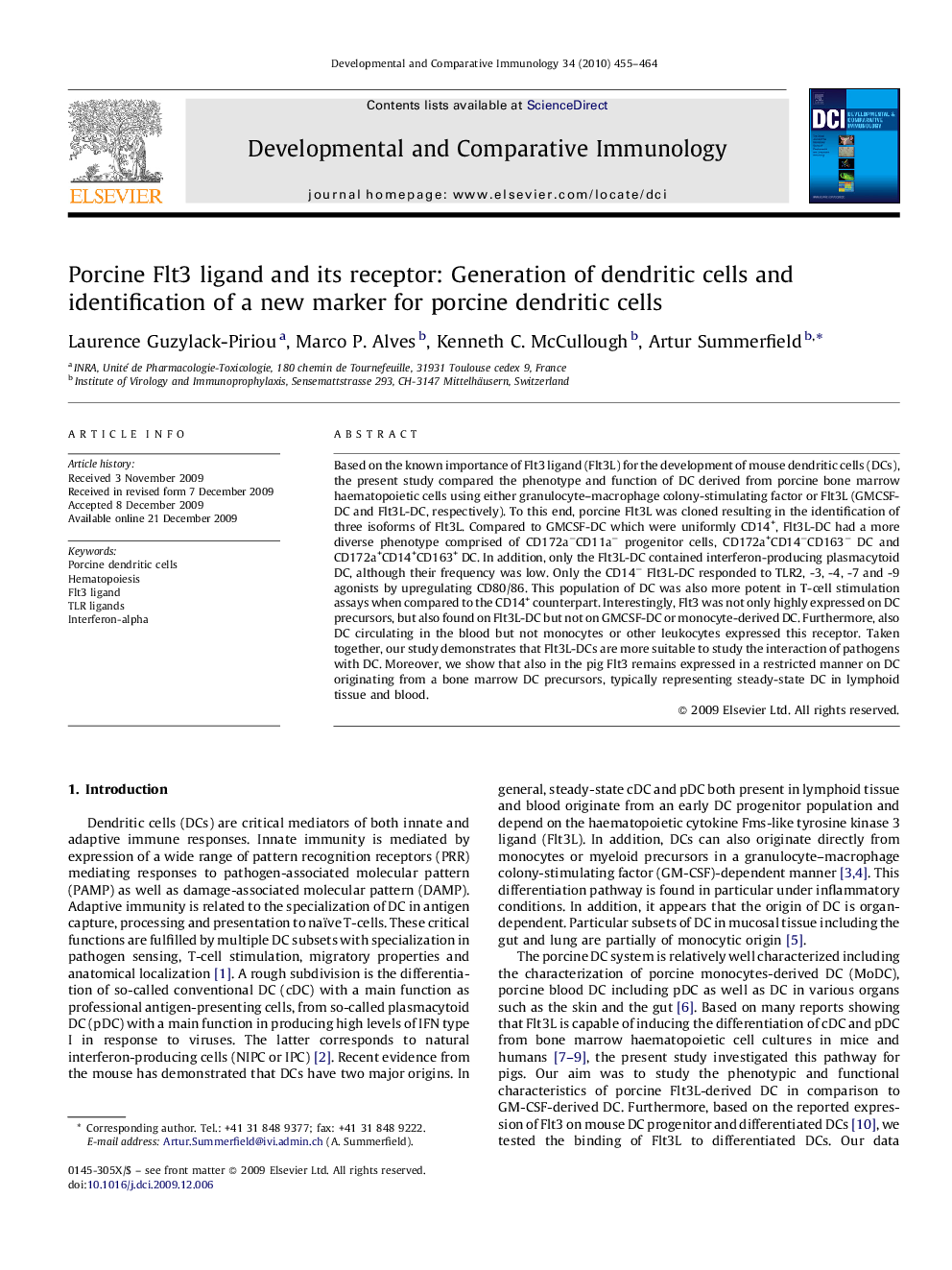| کد مقاله | کد نشریه | سال انتشار | مقاله انگلیسی | نسخه تمام متن |
|---|---|---|---|---|
| 2430152 | 1106546 | 2010 | 10 صفحه PDF | دانلود رایگان |

Based on the known importance of Flt3 ligand (Flt3L) for the development of mouse dendritic cells (DCs), the present study compared the phenotype and function of DC derived from porcine bone marrow haematopoietic cells using either granulocyte–macrophage colony-stimulating factor or Flt3L (GMCSF-DC and Flt3L-DC, respectively). To this end, porcine Flt3L was cloned resulting in the identification of three isoforms of Flt3L. Compared to GMCSF-DC which were uniformly CD14+, Flt3L-DC had a more diverse phenotype comprised of CD172a−CD11a− progenitor cells, CD172a+CD14−CD163− DC and CD172a+CD14+CD163+ DC. In addition, only the Flt3L-DC contained interferon-producing plasmacytoid DC, although their frequency was low. Only the CD14− Flt3L-DC responded to TLR2, -3, -4, -7 and -9 agonists by upregulating CD80/86. This population of DC was also more potent in T-cell stimulation assays when compared to the CD14+ counterpart. Interestingly, Flt3 was not only highly expressed on DC precursors, but also found on Flt3L-DC but not on GMCSF-DC or monocyte-derived DC. Furthermore, also DC circulating in the blood but not monocytes or other leukocytes expressed this receptor. Taken together, our study demonstrates that Flt3L-DCs are more suitable to study the interaction of pathogens with DC. Moreover, we show that also in the pig Flt3 remains expressed in a restricted manner on DC originating from a bone marrow DC precursors, typically representing steady-state DC in lymphoid tissue and blood.
Journal: Developmental & Comparative Immunology - Volume 34, Issue 4, April 2010, Pages 455–464